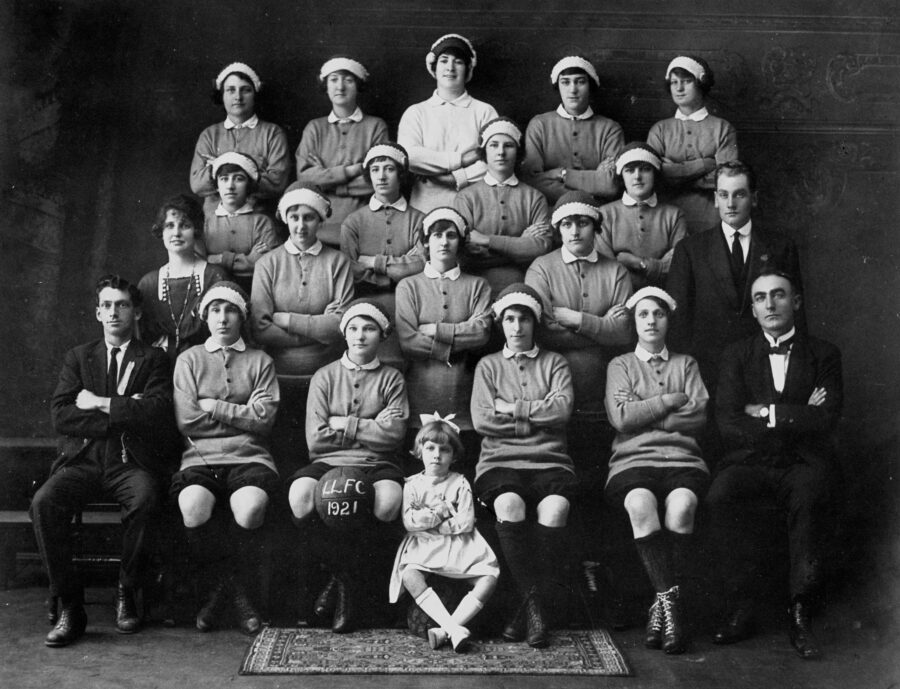‘Unsuitable for females and should not be encouraged’

When Sam Kerr leads the Matildas into Sydney’s Stadium Australia on 20 July to face the Republic of Ireland in the FIFA Women’s World Cup 2023, there’ll be plenty among the 82,500‑strong crowd who’ll wager their hard‑earned cash that this national squad is Australia’s best prospect yet of winning a soccer world cup.
The Matildas’ current success can be traced back to the rise of feminism during the 1960s that gained momentum in the 1970s.
Soccer generally was boosted by the Socceroos’ first-ever qualification for the men’s FIFA World Cup held in West Germany in 1974, after which both the men’s and women’s games developed rapidly. But it wasn’t the first time Aussie women had participated in organised competitive soccer.
In the aftermath of World War I, many women’s teams formed. Women had taken on men’s manual jobs admirably during the conflict, which they were forced to relinquish once the soldiers returned. Some found soccer a way to maintain community ties and stay strong.
The first officially recorded Aussie women’s football clubs included two Toowoomba teams and the Latrobe Ladies, which formed in Queensland in July 1921. By August the Queensland Ladies’ Soccer Football Association was founded, with more than 100 members.
The first public match played by women in Australia was in Brisbane at the Gabba in September 1921. In front of a crowd of 10,000, North Brisbane defeated South Brisbane 2–0.
The women’s sport grew, drawing good crowds, but over in Mother England trouble was brewing. The Football Association (FA), English soccer’s governing body, was unhappy with the women’s game, which was wildly successful in the sport’s home country. Proceeds from matches were being donated to charities beyond the FA’s control; one particular match on Boxing Day in 1920 drew a record crowd of 53,000, raising about $140,000 at today’s Australian values.
Almost a year to the day after that landmark game, the FA banned women’s football, ruling that: “Complaints having been made as to football being played by women, Council felt impelled to express the strong opinion that the game of football is quite unsuitable for females and should not be encouraged.” It cited irregularities in handling of funds raised (unproven), among other concerns. “For these reasons the Council requests the Clubs belonging to the Association refuse the use of their grounds for such matches.”
It didn’t take long for Australia to follow suit. In February 1922 the British Association Interstate Conference in Melbourne emulated their English counterparts in banning women from official grounds. Although many women continued to play competitively, others, fearing negative public opinion, turned to more “acceptable” sports such as tennis and hockey.

